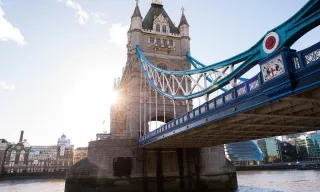Case Studies
David has closely examined several prominent development project and shared his opinions on their successes, short comings, and what he would have done the same or differently, according to his professional philosophy and approach.
Case Studies
OUR EXPERT ANALYSIS
The London Bridge – A Construction Consulting Catastrophe of Historical Proportions (With Commentary by Samuel L. Jackson)
1. Introduction: Now look, motherfuckers. When you’re talking about famous bridges, you’d better throw the damn London Bridge in the conversation. But don’t get it twisted—this ain’t the fancy-ass Tower Bridge with the gothic bling and drawbridge muscles. No, no, no. We’re talking about the OG London Bridge—the plain-ass, no-nonsense slab of stone that carried thousands of soggy-ass Londoners over the River Thames for centuries. And lemme tell you, its construction history is one long, wild-ass story of ambition, mediocrity, and what-the-fuckery that any halfway decent consulting firm would’ve face-palmed out of the gate.
2. The Romans: The First Dumbasses on the Scene So it all starts with the goddamn Romans, who built the first London Bridge around 50 AD. And in true Roman fashion, they slapped some wooden planks together, threw on a prayer to Jupiter, and called it a day. No concrete, no steel, just wood and war paint. Naturally, that shit burned down faster than a campfire in a windstorm. Which brings us to our first consulting note: don’t build major infrastructure with matchsticks in a town that loves fire. Write that shit down.
3. Medieval Mayhem: Bridge Meets Real Estate By the 12th century, some slick medieval motherfucker named Peter of Colechurch built a stone version. This time, they figured, “Hey, let’s make it last.” And it did—for over 600 years! But they didn’t stop there, no sir. These fools thought, “Let’s build HOUSES on it!” You heard me. Motherfucking multi-story, overhanging death-traps. Shops, apartments, even a chapel right in the middle. Who the hell puts a goddamn church on a bridge? Ever heard of structural load, you medieval dipshits?
4. Structural Engineering? Never Heard of Her. Now, if you’re running a construction consulting firm, and your client wants to put a bakery and a fishmonger’s shop on a goddamn bridge, you stop the project and slap ‘em upside the head. But nobody did. So the bridge became this overstuffed stone Frankenstein—narrow as hell, clogged with carts, shit, people, and livestock, and constantly in need of repairs. Earthquakes? Fire? Floods? Shit was like the biblical plagues out there.
5. Death Bridge of Doom: Let’s not sugarcoat it: people died on this motherfucker. Collapse? Check. Fires? Check. Beheadings? DOUBLE CHECK. They even mounted traitors’ heads on spikes as bridge décor. Imagine commuting to work and seeing your uncle’s head waving hello. That’s not just inefficient urban planning—that’s straight-up medieval trauma design. But hey, it stayed up for centuries, so props to those grimy stone-laying bastards. That’s one hell of a performance metric, even if it was built like a cursed Jenga tower.
6. Victorian “Innovation” (AKA: Time to Tear This Shit Down): By the 19th century, Londoners had finally had enough of getting stuck in centuries-old traffic jams and risking a roof collapse from the fishmonger's third-floor apartment. So in 1831, they tore that medieval madness down and built a new London Bridge. This one was more chill: granite arches, clean lines, no damn houses. But here's the kicker: they still didn’t make it wide enough. You’d think, after 600 years of horse carts and overcrowding, somebody would design for, I don’t know, THE FUTURE? But nah, let's just do the bare minimum and call it a day.
7. The Bridge That Couldn’t Keep Up: Fast forward to the mid-20th century, and surprise, motherfuckers! The “new” bridge was sinking—literally. One side was lower than the other. The Thames was laughing its muddy ass off. City engineers, instead of reinforcing it, said, “Let’s just sell the damn thing.” And you know what? SOMEONE BOUGHT IT. A rich American oil tycoon named Robert McCulloch from Arizona, of all places. Then you know what those dumb motherfuckers did? They moved that shit to goddamn Arizona.
8. Arizona: Home of Cactus, Heat, and... London Bridge? You ever been to Lake Havasu? Dry as hell. Not a drop of fog, tea, or cockney accents in sight. But there it is—the actual, literal London Bridge, chilling in the desert like it’s on witness protection. They shipped it stone by stone, marked every damn piece, and rebuilt it over a manmade lake. And guess what? That shit worked. Tourists came. Selfies were taken. Arizona suddenly had a bridge older than the whole damn state. So in a twisted way, this relocation was a marketing masterstroke. Still, if you’re advising on logistics? This was one of the most expensive, over-the-top flexes in transportation history.
9. Lessons Learned (or Not): What can we, as construction consultants, take from this whole saga? First: don’t build homes on a bridge, you absolute maniacs. Second: design for future needs, not just current trends—bridges should age gracefully, not collapse like drunk scaffolding. Third: never underestimate how weirdly patriotic Americans can get when it comes to buying British shit. But the most important lesson? If your infrastructure is sinking, don’t just sell it to Arizona. Fix your shit.
10. Final Thoughts: A Legacy of Madness and Granite In the end, the London Bridge saga is a beautiful, confusing, profanity-inducing case study in human stubbornness, short-sighted planning, and the weird places that ambition (and a fat wallet) can take you. It was built, burned, rebuilt, sold, shipped, and resurrected in a damn desert oasis. And somehow, despite all that, it’s still standing.
So here’s to the London Bridge: a monument to endurance, absurdity, and the eternal hustle of construction consultants trying to clean up the messes of history’s boldest dumbasses.
OPEN PDF VERSION

How to Read a Construction Schedule Like a Pro
A well-built schedule isn’t just a list of dates—it’s a strategic roadmap. Look for:
Critical path items – These drive the project’s true timeline. Delays here affect everything.
Milestone clarity – Watch for vague labels like “site prep” or “finishes.” Ask for detail.
Contingency planning – Good schedules build in buffer time. If everything has to go perfectly for it to work... it won’t.
We help clients decode construction schedules so they can spot risks before they turn into problems.
What Developers Should Know Before Signing a GC Contract
Not all general contractor contracts are created equal. Before signing, make sure:
Scope and exclusions are crystal clear
Allowances are realistic and not just placeholders
Change order processes are detailed
The schedule matches project realities, not sales promises
We negotiate contracts with an eye on protecting your bottom line—not just getting the project started
Red Flags in Budget Proposals You Shouldn’t Ignore
If a proposal seems too good to be true, it probably is. Common red flags include:
Unrealistically low allowances – These get blown up later during selection.
Missing soft costs – Legal, permitting, and consulting fees should be there.
“TBD” line items – If it’s not defined, you’re at risk. Overly vague line descriptions – You should know exactly what you’re paying for.
We analyze contractor budgets to give our clients clarity, confidence, and control.
The Hidden Cost of Scope Gaps
One of the most common (and expensive) mistakes in construction is assuming someone else is handling a task that was never clearly assigned. These are called scope gaps, and they can derail a project fast.
Examples include:
No one coordinating utility shutdowns or tie-ins
Overlooked permitting steps delaying start dates
Missing cleanup, FF&E, or final inspections in contracts
We structure scopes to eliminate ambiguity, reduce finger-pointing, and keep every moving part accounted for—before it becomes a cost problem.


